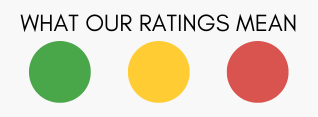Weiss Safety Ratings are similar in purpose to credit ratings. They are designed to help consumers find the best institutions to entrust with their hard-earned savings and retirement money. The higher the rating, the more likely the institution will remain financially stable or strong in good times or bad. Weiss Safety Ratings are calculated based on a complex analysis of hundreds of factors that are synthesized into five indexes: capitalization, asset quality, profitability, liquidity and stability. Each index is then used to arrive at an easy-to-use letter grade rating.

Ratings Defintions
| Excellent. Offers excellent financial security. It has maintained a conservative stance in its business operations and underwriting practices as evidenced by its strong equity base, high asset quality, steady earnings, and high liquidity. |
|
| Good. Offers good financial security and has the resources to deal with a variety of adverse economic conditions. It comfortably exceeds the minimum levels for all of our rating criteria, and is likely to remain healthy for the near future. |
|
| Fair. This is a cautionary or yellow flag. In the event of a recession or major financial crisis, we feel this company may encounter difficulties in maintaining its financial stability. |
|
| Weak. The institution currently demonstrates what, in our opinion, significant weaknesses which could negatively impact depositors or creditors. In the event of a severe recession or major financial crisis, these weaknesses could be magnified. |
|
| Very Weak. The institution currently demonstrates what we consider to be significant weaknesses and has also failed some of the basic tests that we use to identify fiscal stability. Even in a favorable economic environment, it is our opinion that depositors or creditors could incur significant risks. |








